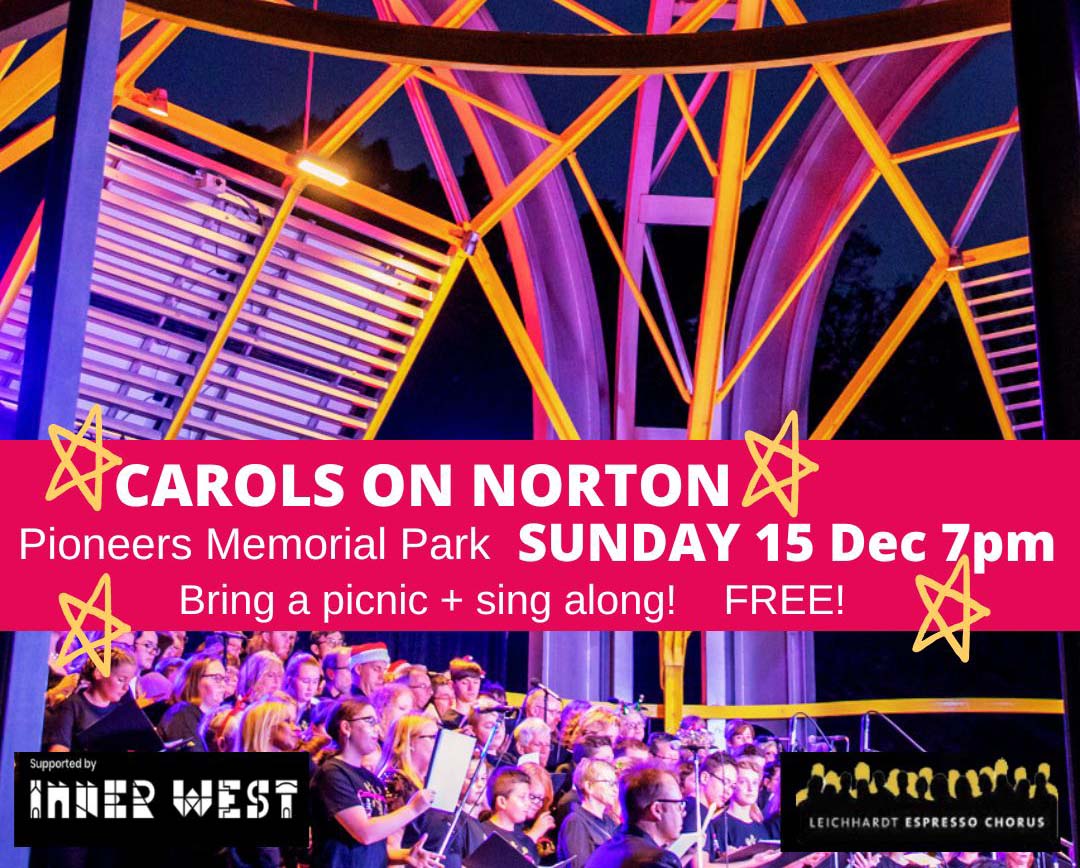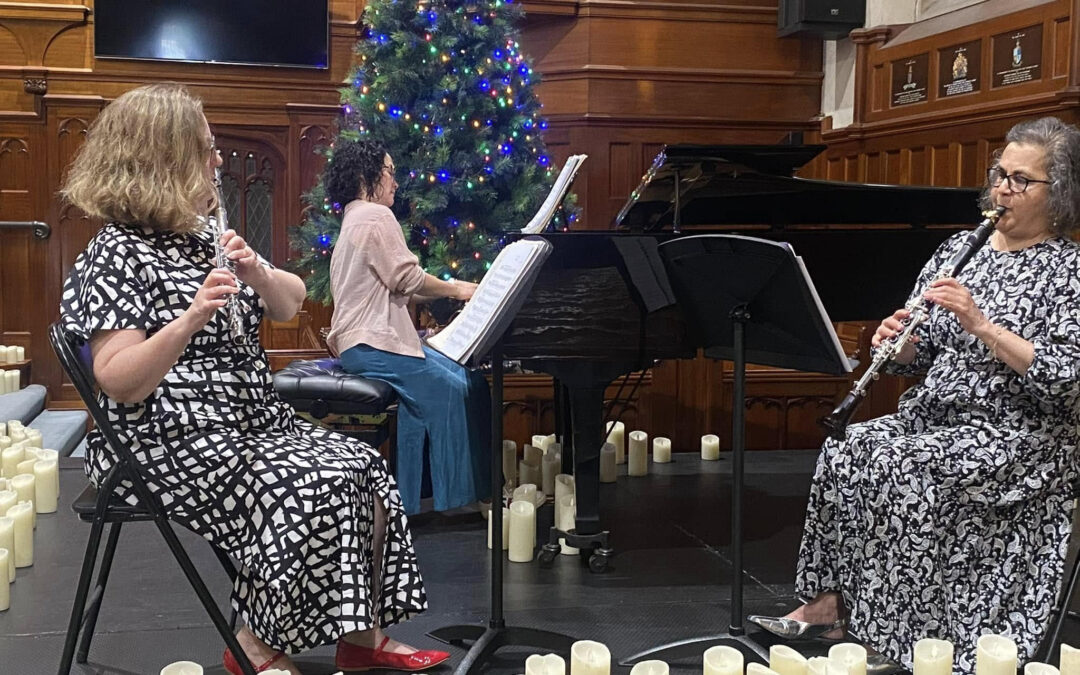Willoughby Symphony Orchestra | Fantastique
30 July, 2023, The Concourse Chatswood
It is entirely fitting that home for the Willoughby Symphony Orchestra is the Concourse Concert Hall in the centre of Chatswood. Both deserve each other, the concert auditorium being a perfect stage on which to perform and project. And performance there was from this wonderful orchestra and its engaging, most personable conductor, Dr Nicholas Milton AM, a veritable human dynamo. Clearly, Milton as Chief Conductor (since 2001) is a leader who has, intelligently, nurtured leadership among his players. One could not fault their sounds orchestral.
First up. Those of us who make the effort to travel overseas – across the Harbour to the North Shore from the nether regions – have long understood that we’re a tribal bunch. People on the North Shore dance to their own tune. For example, Chatswood has long been a standout for fine music that continues to be supported by those loyal followers of, let’s say, ‘riper years’. Eastern Suburbanites enjoy their sense of otherness beyond the border at Rushcutters Bay. Shire folk are the stuff of Tolkien, whereas tribal Inner Westerns consider themselves somewhat laid back in a radical sort of way. Sydney’s true west is incomprehensible to many, largely ignored, but with an immense, yet unacknowledged reservoir of culture and musicality. Why mention this? I do believe that place and context are important.
Violin Concerto in D major, op. 35, Eric Korngold
This brief digression takes us back to Chatswood, Eric Korngold, and last Sunday’s Violin Concerto in D major, op. 35. Welcomed to the stage by her husband, violin soloist, Rosa Donata Milton, delivered a moving interpretation of the work. As one of Germany’s most exceptional violinists and Concertmaster of the Philharmonic Orchestra of Jena, Rosa Donata is renowned for her interpretations of the major violin concertos of the 20th century. For many concert-goers, however, the name Korngold is still something of a mystery. Born in Austria in 1897 in the twilight years of the Hapsburg Empire, Eric was a child prodigy who was fortunate enough to be mentored by Gustav Mahler. In his early career he was to emerge as a noted pianist and later as a composer of classical music, but is more widely known for his Hollywood film scores. At the age of 37, Korngold fled Nazi persecution and at the invitation of motion picture director Max Reinhardt, wrote the music for Hollywood blockbusters of the day. Korngold’s work, lush, rich, deeply romantic and dramatic, established him as the premier composer in this genre, for which he picked up several Oscars and acclaim from millions of appreciative movie-goers. Yet, most of all, Korngold wanted to be known and remembered as a serious composer. This piece, written at the end of the war in 1945, incorporated themes from his film music.
As a keen music lover, your reviewer is all too aware of his own limitations. One’s opinion is an entirely personal viewpoint. I very much enjoyed this piece which led us through three movements, each of them melodic, the Second Movement being a reverie, parts of which put me in mind of Felix Mendelssohn’s Scottish Symphony (Symphony No. 3). Although never cloying or sentimental, some of Korngold’s phrasing also reminded me of one of his contemporaries, the Englishman, Eric Coates, another composer of film scores, though of lesser renown.
Did Korngold’s piece work for me? Yes, and no. Conductor, soloist and orchestra excelled with a piece that was, dare I say, aspirational on the part of the composer. I wonder, however, if Korngold’s involvement with Hollywood made it difficult, if not impossible, to escape the influence of scoring film music? If so, this is hardly surprising, although in no way did it sully my enjoyment of this exquisite song to love and its occasional nod to the melancholic. The fact that Korngold went in search of wider boundaries is something for which we must be grateful, even though I feel he never quite succeeded. Finally, the encore with the audience repeatedly calling Rosa Donata back to the stage. How lovely it was to witness soloist and conductor embrace as people who bring beauty to the world.

Symphonie fantastique op. 14, Hector Berlioz
Where to begin? The backstory is well documented. French composer Hector Berlioz wrote this piece in 1830 during what is known as the early Romantic period. Herewith the plot, in brief, thanks to Wikipedia. A gifted artist is rejected by the woman he loves (more like infatuation?). Lost in hopelessness and despair he goes bonkers, poisons himself with opium, and blows himself away in a cloud of drug-fuelled hallucination. The symphony commences with a scene in a field and ends with a march to the scaffold and a satanic dream. The artist’s lust is represented by an elusive theme called the idée fixe — the object of fixation. It’s heady stuff. Apparently, the inspiration was Berlioz’s obsession with Irish actress Harriet Smithson, who played the role of Ophelia in the 1827 production of William Shakespeare’s Hamlet. Obsession lies somewhere on the spectrum of mental disorder, and with it the inevitable glissade into madness for those spellbound. Berlioz began to court Smithson and later manipulated her into marriage by swallowing a lethal dose of opium in front of her. Hysterical, she accepted the proposal, upon which Berlioz produced a vial of antidote from his other pocket. The two were married in 1833 and eventually separated, which is perfectly understandable. Truth is stranger than fiction, or is it a case of art imitating life?
Without lapsing into hyperbole, Milton led us along that tortuous, meandering road to hell in a concert piece that to my mind was truly fantastique. Hark, the reverie of a First Movement through which we discern a building sense of urgency, a monstrous regiment of musicians marching relentlessly onward. Praise be to that formidable back row of four bassoonists, two tuba players, trombonists, trumpets, horns and a battery of percussionists. And then the strings resolve into a soft fade from the frenetic action of a troubled dream.
The Second Movement takes us to The Ball which conjures visions of elegant dancers before a segue into the Third Movement, the Scene in the Fields where ‘love’ seems to be at work – but also something very nasty. The all-too familiar March to the Scaffold of the Third Movement, a gloomy presentiment of what follows, drum beats our villain to the gallows. Then, it’s all hands to the pump in a gloriously full sound of rightful punishment expressed in a ceremonial fanfare. The full and furious of this finale never gets away from Milton, the haunting sound of the clarinet comes through before the drumbeat finale to this movement. Job done. The dream of a witches’ sabbath takes us to a putrid brew of the imagination. Hecate, the laughing hag, a confusion of squawking sound from those clarinets adding to the torment. Then for whom doth the bell toll? Judgement is pronounced and with it a vision of hell and descent into madness. What better ending could there be in all its riotous assembly? Furiosa brings this massive piece to an end.





























